Dutch-born actor, singer, and entertainer Johannes Heesters (1903-2011) was active both on stage, television and in film. The Dutch tenor specialised in the Viennese operetta. His 91-year career began in Amsterdam in 1920 and in 1935 Heesters moved to Germany. There he enjoyed many successes and reportedly became 'Adolf Hitler’s favourite actor', which would colour his career.

German postcard by Film-Foto-Verlag, no. G 143, 1941-1944. Photo: Berlin-Film / Wesel.
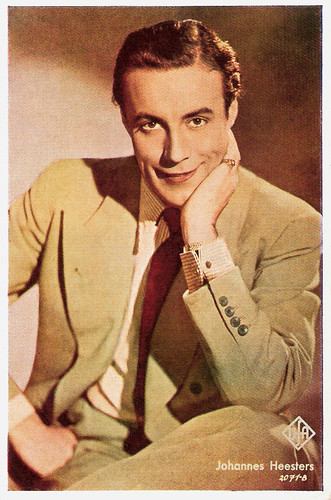
Czech postcard, no. 2071-B. Photo: Ufa.
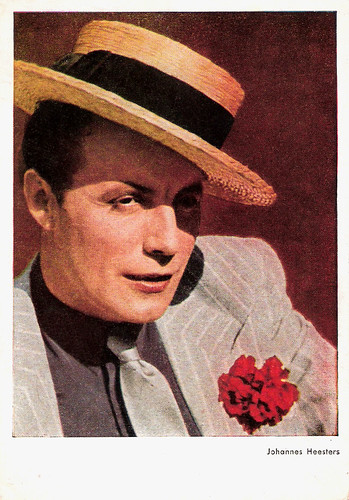
German postcard by Verlag und Druckerei Erwin Preuss, Dresden-Freital. Photo: Charlott Serda.

German collectors card by Lux.
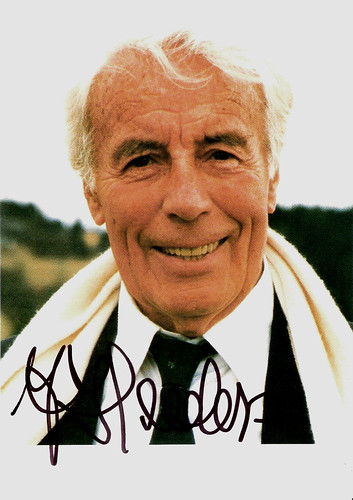
Vintage promotion card.
Johan Marius Nicolaas Heesters was born in 1903 in Amersfoort, Netherlands. 'Jopie' made his stage debut in 1921 as a 17-year-old.
In 1923 he had his first singing role in a Dutch stage production of August Strindbergs 'Ett Drőmspel' (A Dream Play). Many roles in operettas like 'Walzertraum', 'Dreimäderlhaus' and 'König der Vagabunden' followed.
A year later, he made his film debut in the Dutch silent film Cirque hollandais/Dutch Circus (Theo Frenkel, 1924) starring the legendary stage actor Louis Bouwmeester.
When sound film was introduced, Johan Heesters played and sang in the Dutch film comedies Bleeke Bet (Alex Benno, Richard Oswald, 1934) and De vier Mullers/The Four Mullers (Rudolf Meinert, 1935). The latter was filmed in Vienna and was also shot there in a German-spoken version as Alles für die Firma/Everything for the Firm (Rudolf Meinert, 1935).
In 1934 Heesters made his Viennese stage debut at the Volksoper in Karl Millöcker's 'Der Bettelstudent' (The Beggar Student) as Johannes Heesters. It was a huge success and many more operettas followed. Over the decades, 'Da geh' ich ins Maxim', Count Danilo Danilovitch's entrance song from Franz Lehár's 'Die Lustige Witwe' (The Merry Widow) would become Heesters's signature tune. He played Danilo with a white silk scarf and top hat for 32 years 1600 times on stage, from 1938 to 1970.

German postcard by Film-Foto-Verlag, no. G 143, 1941-1944. Photo: Berlin-Film / Wesel.

Czech postcard, no. 2071-B. Photo: Ufa.

German postcard by Verlag und Druckerei Erwin Preuss, Dresden-Freital. Photo: Charlott Serda.

German collectors card by Lux.

Vintage promotion card.
From Amsterdam to Vienna
Johan Marius Nicolaas Heesters was born in 1903 in Amersfoort, Netherlands. 'Jopie' made his stage debut in 1921 as a 17-year-old.
In 1923 he had his first singing role in a Dutch stage production of August Strindbergs 'Ett Drőmspel' (A Dream Play). Many roles in operettas like 'Walzertraum', 'Dreimäderlhaus' and 'König der Vagabunden' followed.
A year later, he made his film debut in the Dutch silent film Cirque hollandais/Dutch Circus (Theo Frenkel, 1924) starring the legendary stage actor Louis Bouwmeester.
When sound film was introduced, Johan Heesters played and sang in the Dutch film comedies Bleeke Bet (Alex Benno, Richard Oswald, 1934) and De vier Mullers/The Four Mullers (Rudolf Meinert, 1935). The latter was filmed in Vienna and was also shot there in a German-spoken version as Alles für die Firma/Everything for the Firm (Rudolf Meinert, 1935).
In 1934 Heesters made his Viennese stage debut at the Volksoper in Karl Millöcker's 'Der Bettelstudent' (The Beggar Student) as Johannes Heesters. It was a huge success and many more operettas followed. Over the decades, 'Da geh' ich ins Maxim', Count Danilo Danilovitch's entrance song from Franz Lehár's 'Die Lustige Witwe' (The Merry Widow) would become Heesters's signature tune. He played Danilo with a white silk scarf and top hat for 32 years 1600 times on stage, from 1938 to 1970.
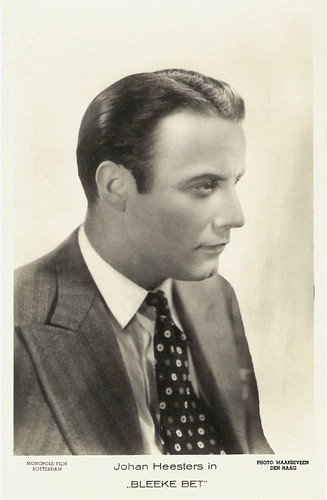
Dutch postcard by M. B. & Z. (M. Bonnist & Zonen, Amsterdam). Photo: Monopole Film, Rotterdam / Maarseveen, Den Haag. Publicity still for Bleeke Bet (1934).
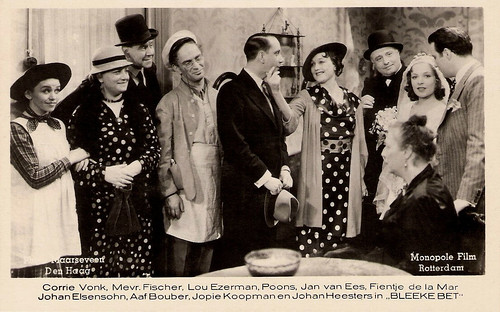
Photo: Monopole Film, Rotterdam / Maarseveen, Den Haag. Publicity still for Bleeke Bet (1934). Johan Heesters is the bridegroom at the far right.
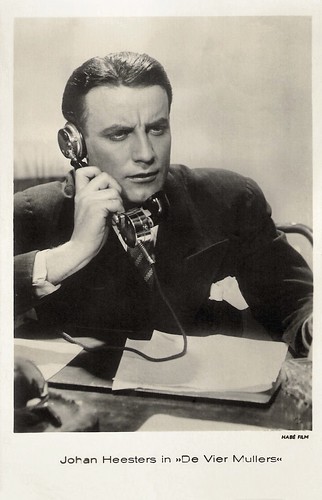
Dutch postcard by Habé Film. Sent by mail in 1935. Photo: publicity still for De Vier Mullers/The Four Mullers (Rudolf Meinert, 1935).

Dutch postcard by Habé Film. Photo: publicity still for De Vier Mullers/The Four Mullers (Rudolf Meinert, 1935) with Johan Kaart.

German postcard by Ross Verlag, no. A 3352/1, 1941-1944. Photo: Liselotte Strelow.
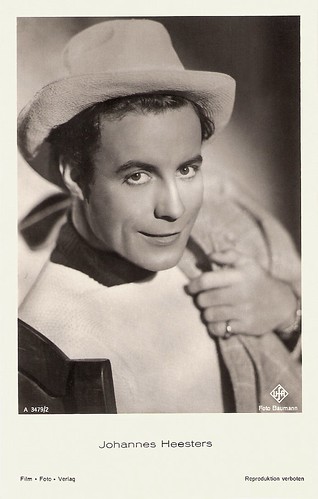
German postcard by Film-Foto-Verlag, no. A 3479/2, 1941-1944. Photo: Baumann / Ufa.
Dream couple
From 1936 on, Johannes Heesters played in various Ufa films. Many of his stage successes were also made into musical films, such as the Der Bettelstudent/The Beggar Student (Georg Jacoby, 1936) with Carola Höhn. In Gasparone (Georg Jacoby, 1937) and the musical Hallo Janine!/Hello, Janine! (Carl Boese, 1939), he starred with Marika Rökk. They were called the Dream Couple of the German Musical film.
Other popular films with Heesters were Das Hofkonzert/The Court Concert (Detlev Sierck aka Douglas Sirk, 1936) with Márta Eggerth; and Illusion (Viktor Tourjansky, 1941) with Brigitte Horney. In the Spring of 1939, he performed in the operetta 'Gräfin Mariza' (Countess Maritza) in Amsterdam and The Hague with an ensemble of emigrated Jewish performers. The Nazis later criticised him for this cooperation, but till almost the end of WW II Heesters worked extensively for the Nazi-controlled Ufa.
His last wartime film was Die Fledermaus/The Bat (Géza von Bolváry, 1946, produced in 1945) with Marte Harell. After the war, he was never accused of being a Nazi propagandist, and the Allies allowed him to continue performing in post-war Germany and Austria.
He played both on stage and in films. Die Czardasfürstin/The Csardas Princess (Georg Jacoby, 1951) reunited him with Marika Rökk. Memorable was his lead in the film Bel Ami (Louis Daquin, 1955). Little known is his part in the German version of Otto Preminger's The Moon is Blue, entitled Die Jungfrau auf dem Dach/The Girl on the Roof(Otto Preminger, 1953).
After the Schlagerfilm Junge Leute brauchen Liebe/Young People Need Love (Géza von Cziffra, 1961) with Conny Froboess and Peter Weck, he stopped making films and concentrated on stage and television appearances and on producing records.

Romanian postcard. Photo: Tobis Film GmbH. Johannes Heesters and Dora Komar in the Operetta film Immer nur Du/You Only You (Karl Anton, 1941).
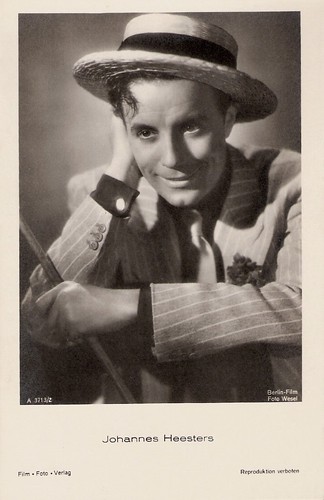
German postcard by Film-Foto-Verlag, no. A 3713/2, 1941-1944. Photo: Berlin-Film / Wesel.

German postcard by Film-Foto-Verlag, no. A 3713/1, 1941-1944. Photo: Manninger / Berlin-Film.

German postcard by Film-Foto-Verlag, no. A 3713/3, 1941-1944. Photo: Binz / UFA.
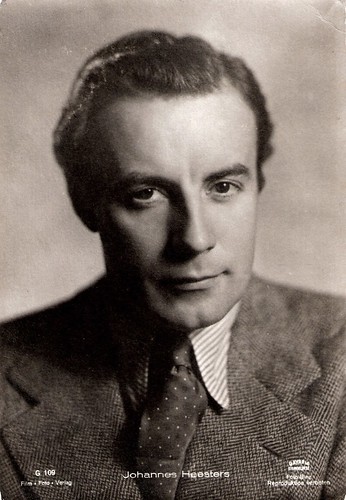
German postcard by Film-Foto-Verlag, no. G 109, ca. 1941-1944. Photo: Binz / Bavaria Filmkunst.

German postcard by Film-Foto-Verlag, no. A 3570/1, 1941-1944. Photo: Binz / Bavaria Filmkunst.
Booed off the stage
Johannes Heesters moved to Germany in 1935. There he performed for Adolf Hitler (according to IMDb, he was the Führer’s favourite actor) and he visited the Dachau concentration camp. After the war, many Dutch people could not forgive him for this visit. In the early 1960s, he was booed off the stage in Amsterdam when he tried to make a comeback in the Netherlands with 'The Sound of Music'.
Since then he performed notably in Germany and Austria. Heesters had two daughters by his first wife, the Belgian actress Louise ‘Wiesje’ Ghijs, whom he married in 1930 and who was his co-star in De vier Mullers (Rudolf Meinert, 1935). After she died in 1985, Heesters remarried in 1991 with German actress Simone Rethel. His younger daughter Nicole Heesters and his granddaughter Saskia Fischer are well-known actresses in German-speaking countries.
In 2008 he apologised for his cooperation with the Nazi regime. In February of that year, Johannes Heesters performed in his birthplace Amersfoort. This was the first stage appearance in four decades in his home country. Despite protests against his Nazi associations, the performance became a triumph for the old star.
In 2008 he also played a scene in another film, 1 1/2 Ritter - Auf der Suche nach der hinreißenden Herzelinde/1½ Knights - In Search of the Ravishing Princess Herzelinde (Til Schweiger, 2008). His final film was the short Ten (Stefan Hering, 2011) in which he played St. Peter. At the gates of heaven, a man (Christof Arnold) has only one chance to come back to his little ill daughter: to win a bet against St. Peter. He has to break all ten commandments within 30 minutes in Munich's most notorious bar!
Johannes Heesters could not attend the premiere. On 29 November 2011, he was admitted to a hospital because of a fever. He thus also missed the Bambi Award show, where he was offered his 10th Bambi statue. And on 25 December 2011, the 108-year-old 'Jopie' passed away for good in a hospital in Starnberg.
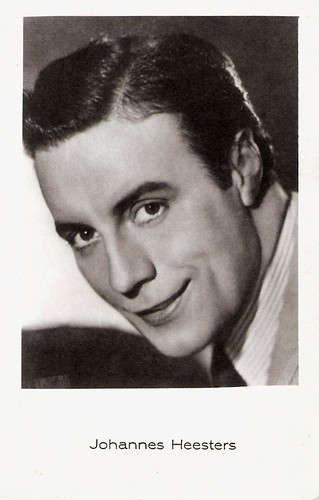
Vintage postcard.

German collectors card. Photo: Cine-Allianz / Gloria / Film Ewald. Publicity still for Die geschiedene Frau/The Divorcée (George Jacoby, 1953) with Marika Rökk.

German postcard. Photo: ÖFA-Schönbrunn Film / Herzog Film / Czerwonski. Johannes Heesters as composer Franz von Suppé in the Austrian Operetta film and biopic Hab' ich nur deine Liebe/If I Only Have Your Love (Eduard von Borsody, 1953).

German postcard by Ufa/Film-Foto. Photo: Arthur Grimm / CCC / Allianz. This could refer to the Allianz film Stern von Rio/Star from Rio (Kurt Neumann, 1955).

German postcard by Ufa, Berlin-Tempelhof, no. CK-60. Photo: Arthur Grimm / Central Europa Film / Prisma. Publicity still for Viktor und Viktoria/Viktor and Viktoria (Karl Anton, 1957) with Johanna von Koczian.
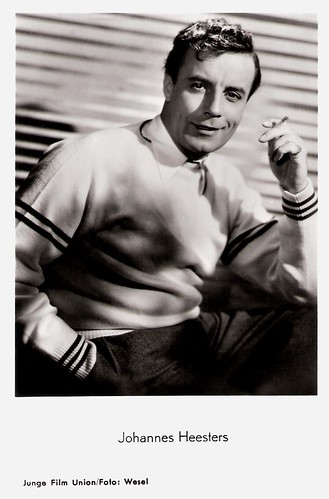
German postcard by Rüdel-Verlag, Hamburg-Bergedorf, no. 125. Photo: Junge Film Union / Foto Wesel.
Johan (Johannes) Heesters sings 'De ode aan de Westertoren in Bleeke Bet' (1934). The tower (the Westertoren in Amsterdam) is the same one Anne Frank describes in her diary. The lovely girl in the clip is Bleeke Bet herself, played by Jopie Koopman. Source: brassens66 (YouTube).
Johannes Heesters and Edith Schollwer sing 'Ich werde jede nacht von Ihnen traumen' in a clip from Gasparone (1937). Source: Ein Lied Geht Um Die Welt (YouTube).
Johannes Heesters in Amersfoort in 2008. He sings 'Nou tabé dan'. Source: Mokum tv (YouTube).
Sources: Wikipedia, Eric Kelsey (Reuters), johannes-heesters.de (German - now Simone Rethel.de), Filmportal.de and IMDb.
This post was last updated on 31 August 2024.
No comments:
Post a Comment